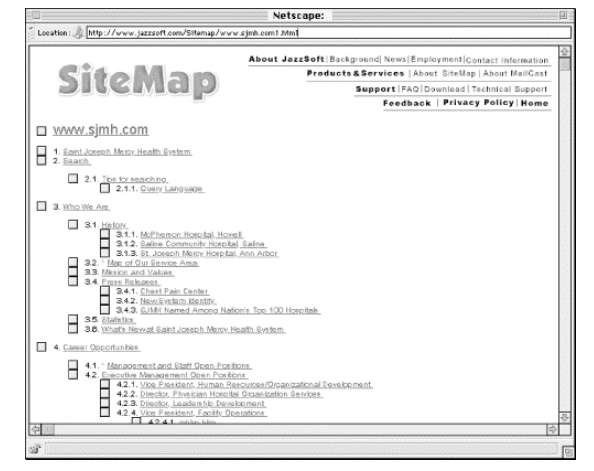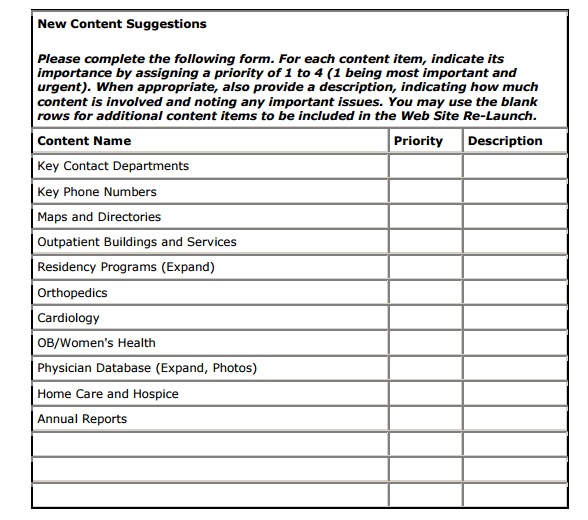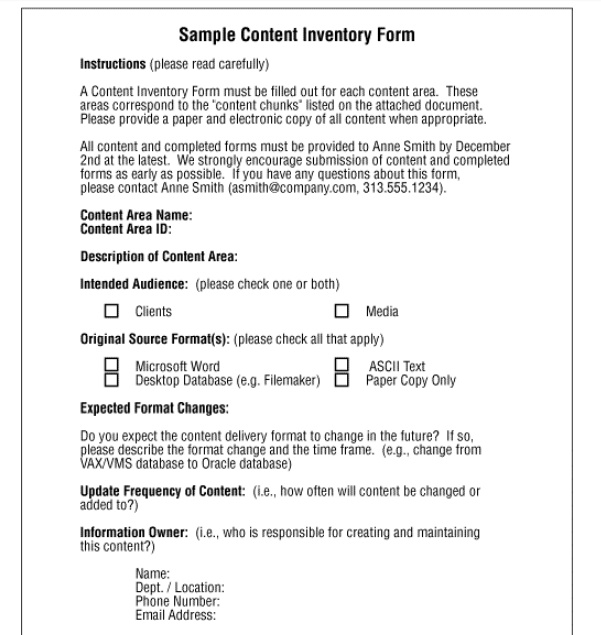Chapter: Information Architecture on the World Wide Web : Research
Identifying Content and Function Requirements
Identifying Content and Function Requirements
One of the biggest challenges in information architecture
design is that of trying to get your arms around the intended content and
functionality of the web site. For a large site, this can be absolutely
daunting. The first step to success is realizing that you can't do it all at
once. The identification of content and function requirements may involve
several iterations. So just roll up your sleeves and get started.
1. Identifying Content in Existing Web Sites
As the Web matures, more and more projects
involve rearchitecting existing web sites rather than creating new ones from
scratch. In such cases, you're granted the opportunity to stand on the
shoulders of those who came before you. You can examine the contents of the
existing web site and use that content inventory as a place to begin.
Rather than pointing and clicking your way
through hundreds or thousands of web pages, you should consider using an
automated site mapping tool such as SiteMap (see Figure
7.2).16 These tools generate a text-only view of the
hierarchy of the web site. If the original architects structured the hierarchy
and labeled page titles reasonably well, you should get a bird's-eye view of
the existing architecture and a nicely organized inventory of the site's
content. At this point, you're way ahead of the game. However, it's almost
certain that the site redesign will involve the addition of new content and the
integration of new applications, so don't think you get to escape from the
challenge of identifying content and function requirements.
Figure 7.2. SiteMap provides a quick and easy way to generate a
bird's-eye view of an existing web site's hierarchy. We typically print the
complete map for detailed review, especially if we're dealing with a large site
that has hundreds or thousands of pages.

2. Wish Lists and Content Inventory Forms
Many clients come to us with completely
unrealistic timelines in mind. It is not unusual for a client to approach us in
November stating that they want a world-class web site by the end of the year.
In the early days, this would send us into a world-class panic. "How can
we possibly build this site in 6 weeks?" we'd ask ourselves. "We'll
have to work 36 hours a day each." However, we soon learned this panic to
be unnecessary. Why? Because the greatest time-sink in Web and intranet design
projects involves the identification and collection of content, meaning that
the client, not us, quickly becomes the bottleneck.
Collecting content from people in multiple
departments takes time and effort. This is particularly true of large,
geographically distributed organizations. Some people and departments may care
about the project and respond quickly to requests for content. Others may not.
Content will reside in a multitude of formats ranging from Microsoft Word to
VAX/VMS databases to paper. Content may be limited for viewing by internal
authorized audiences or subject to copyright restrictions. Since it is
impossible to design an effective information architecture without a good feel
for the desired content, you can rest easy knowing that the client's
organization will soon become the bottleneck in the research phase.
However, that is not to say that the architect
is not responsible for guiding this content collection process. On the
contrary, your job is to help develop a process that efficiently and
effectively collects all content and information about content that you will
need to design and build the site. Wish lists and content inventory forms are
invaluable tools for such a process.
Your most immediate goal is to gather enough
information about the desired content to begin discussing possible
architectural approaches. In the early stages, you do not need or even want the
content itself. What you want is an understanding of the breadth and depth of
content that might be integrated into the site over time. You want the top of
the mountain, long-term view. Remember that you are trying to design for
growth. You don't want your vision to be limited by short-term format or
availability or copyright issues.
Wish lists are an excellent tool for this
information gathering task (see Figure 7.3).
Invite all relevant parties to create wish lists that describe the types of
content they would like to see on the web site. Make sure you include people
who deal with others' information needs on a regular basis (e.g., technical
support staff, librarians). Ask them to take a first stab at organizing that
content into categories. Involve senior managers and sales representatives,
information systems specialists and secretaries. If appropriate and practical,
involve representatives from the intended audiences as well. With these
relatively unstructured wish lists you can expect a fast turnaround time.
Within a week or so you can solicit, gather, and organize responses and begin
moving ahead with conceptual design. You will find that this process helps you
to define and prioritize the content for the web site.
Figure 7.3. As you can see, wish lists not only define the scope
of content, but also provide you with a good start at organizing the content
into categories.

Once people have taken a first pass at the
wish list, you can compile the complete set of content requirements and ask the
same group to rank that content according to importance and urgency, as in the
example below. This type of structured form allows you to quickly learn about
the desired content and associated priorities.

At this time, it is also important to begin a
parallel process of content collection, not because you need the content yet,
but because the process of collection takes a long time and can happen
independently of your architecture efforts. The efficient collection of content
in a large, distributed organization requires a highly structured process. A
content inventory form is a useful tool for bringing structure to this process.
The sample content inventory form in Figure 7.4 provides an idea of the types of questions
you might need to ask. You'll want descriptive information that includes a name
and unique identification number (used to connect the content inventory form
with print and electronic versions of the actual content). A brief content
description and an indication of the intended audience will often prove more
useful at this stage than seeing the content itself (which might really slow
things down).
Figure 7.4. Sample content inventory form

This form should be accompanied by
instructions that explain how to submit the response and by both print and
electronic versions of the content. Ideally, you will design a simple data
entry form that allows online submission of responses. You might use the Web as
the medium for distributing the form. We've also used common database
applications such as Microsoft Access.
In this way you can use a database as the repository
of all completed content inventory forms. This facilitates tracking progress
and content analysis. For example, you will be able to generate a report that
shows how much content is intended for a particular audience.
Related Topics